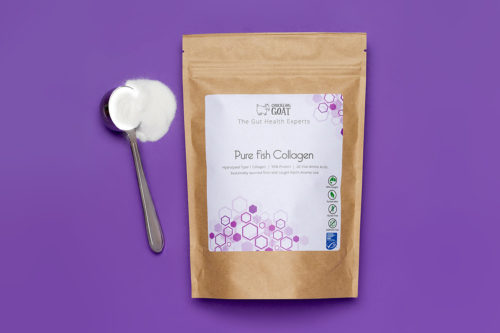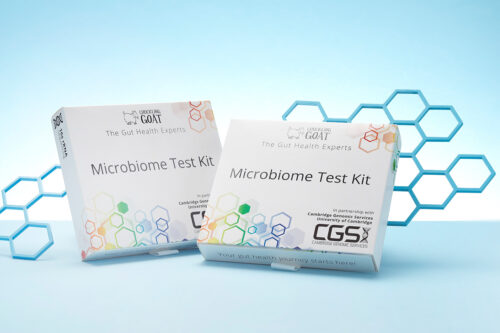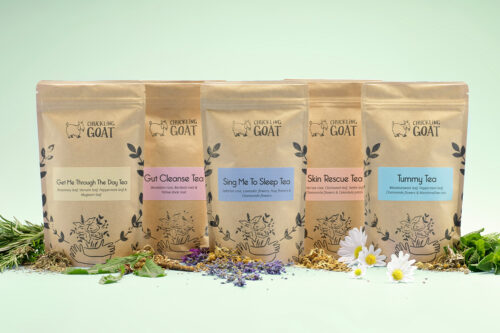
Complete Mushroom Blend
Original price was: £45.£40Current price is: £40. every 3 weeks
We believe our Complete Mushroom Blend is the most extensive mushroom supplement available. Our meticulously crafted formula combines thirteen of nature’s most powerful mushrooms, including Reishi, Shiitake, and Lion’s Mane. This all-in-one blend ensures you’re receiving a full spectrum of benefits without the hassle of choosing between different supplements.
With just one heaped teaspoon (4 grams) a day, you can easily incorporate this blend of polysaccharides, indoles, polyphenols, carotenoids, amino acids, provitamins, enzymes, vitamins, minerals and trace elements into your daily routine. Whether mixed into a smoothie, coffee or your favorite drink, our blend is designed for efficiency, providing a daily boost to your health with minimal effort.
Our Complete Mushroom Blend is a source of biotin, calcium, iron, magnesium, niacin, pantothenic acid, phosphorus, potassium, riboflavin (vitamin B2), vitamin B6, vitamin D and Zinc. It is also high in fibre and protein.
- Weight: 84 grams
- Dosage: 4 grams (one heaped teaspoon) a day
- Ingredients: Reishi, Shiitake, Maitake, Hericium erinaceus (Lion’s Mane), Cordyceps sinensis, Chaga, Coriolus versicolor (Turkey Tail), Agaricus blazei Murrill, Polyporus umbellatus (Umbrella Polypore), Auricularia polytricha, Coprinus comatus (Shaggy Ink Cap), Tremella fuciformis (Snow Fungus), Pleurotus ostreatus (Oyster Mushroom).
- All ingredients mixed in equal parts
Use the following links to jump to the relevant section for each of the 13 medicinal mushrooms: Reishi, Shiitake, Maitake, Lion’s Mane, Cordyceps, Chaga, Turkey Tail, Agaricus blazei, Umbrella Polypore, Auricularia, Shaggy Ink Cap, Tremella and Oyster Mushroom.
*£5.99 for orders under £25. Possible delays on sale products.
We do not recommend any of our products other than kefir during pregnancy or breastfeeding.
Order of Kefir dispatched very quickly. Well packaged. Very good quality product. Good quality info included.
~ Dorothy Reid
Cleansing bar is great and lasts forever. The lotion is light and non sticky. Great products.
~ Sandra Howley
Ordering and delivery went just fine, and I love the Kefir!
~ Robert Pehrson
Great products, knowledgeable and friendly customer service. Love the goat magic!
~ Laura
Great product and service, improvement in my skin within a couple of weeks after starting on the Kefir.
~ Paul Mortimer
...It is settling my IBS which in turn is calming down my fibromyalgia and sjordens. It has also stopped my bleeding gums. Thank you!
~ Marilyn Fraser
Chuckling Goat provide a good customer service and products.
~ Susan
A company with an interesting story behind it. Dedication and enthusiasm shines through in all their products.
~ NIcholas
Excellent- definitely made a difference to how I feel !
~ Sweetie
Our Complete Mushroom Blend is a source of biotin, calcium, iron, magnesium, niacin, pantothenic acid, phosphorus, potassium, riboflavin (vitamin B2), vitamin B6, vitamin D and Zinc. It is also high in fibre and protein.
These statements are based on authorised health claims from the Great Britain Nutrition and Health Claims (NHC) register. Health claims refer to the relationship between the consumption of a food or its ingredients and health benefits. The benefits described are attributed to the nutrients present in the product and are regulated by law to ensure accuracy.
Reishi
Reishi mushrooms, also known by their scientific name Ganoderma lucidum, have a storied history that spans millennia, particularly in East Asia where they have been revered as symbols of longevity and health. Known as the “Mushroom of Immortality” in traditional Chinese culture, these fungi are easily recognizable by their glossy, red-varnished appearance and kidney-shaped cap.
Scientifically, Reishi are polypore mushrooms, meaning they disperse spores through numerous pores rather than gills underneath their caps. These mushrooms grow on hardwoods in dense, humid forests, often on decaying logs and stumps, forming a complex ecological relationship with their host trees. They contain a variety of bioactive molecules, including polysaccharides, triterpenoids, and peptidoglycans, which contribute to their structural complexity. These compounds are integral to the mushroom’s hard, woody texture and its ability to thrive in its natural environment.
Reishi’s historical significance and unique scientific structure make it a fascinating subject of study and a cherished natural specimen in various cultures around the world.
Shiitake
Shiitake mushrooms, known scientifically as Lentinula edodes, are celebrated not only for their rich, umami flavour but also for their significant role in traditional Asian medicine and cuisine. Originating from East Asia, shiitake has been cultivated for over a thousand years, first documented during the Song Dynasty in China. These mushrooms were historically grown on fallen broadleaf trees, utilizing techniques that have evolved into today’s sophisticated cultivation methods.
Shiitake mushrooms are characterized by their brown, convex caps that can range up to several inches in diameter and their cream-coloured underside of closely arranged lamellae or gills. These gills release spores into the environment, a critical part of their reproductive cycle. Shiitake’s flesh is known for its firmness and the ability to retain water, enhancing its texture and flavour when cooked. This mushroom is rich in compounds like lentinan, a beta-glucan that has been studied for its complex structure and properties.
Shiitake mushrooms hold a place of culinary and cultural importance in many Asian societies, underpinned by a fascinating biological and historical heritage.
Maitake
Maitake mushrooms, bearing the scientific name Grifola frondosa, have a rich history in Japanese and Chinese cultures where they are prized for their culinary and traditional medicinal uses. Known colloquially as “Hen of the Woods” because of their feathery, clustered growth resembling a hen’s plumage, Maitake has been harvested for centuries in the wild before its successful cultivation began.
Maitake grows at the base of trees, particularly oaks, as a large mass of overlapping caps, each frond emanating from a single, shared base. This growth habit allows the mushroom to form dense, leaf-like structures that can weigh several pounds. The Maitake’s structure is not only unique for its appearance but also for its adaptability to its woodland environment, thriving in temperate forests across parts of Asia, Europe, and North America.
The mushroom’s complex biological makeup includes polysaccharides such as beta-glucans, which are significant to its structure and natural growth processes. Maitake’s distinct form and historical backdrop combine to create a mushroom appreciated both in gastronomy and traditional wellness practices.
Lion’s Mane
Lion’s Mane mushrooms, or Hericium erinaceus, are distinguished not only by their unique appearance but also by their historical use in traditional Chinese medicine. Revered for centuries, these mushrooms are noted for their cascading, white spines that resemble a lion’s mane, earning them their common name. They grow naturally on hardwoods in the forests of North America, Europe, and Asia, and have been utilized in various cultural practices for their perceived beneficial properties.
Lion’s Mane mushrooms develop a fascinating structure composed of long, dangling spines rather than the typical cap and stem configuration seen in many other fungi. This distinctive morphology increases their surface area, enhancing spore dispersal. Internally, these mushrooms contain a variety of bioactive substances including hericenones and erinacines, which contribute to their complex biochemical profile. This structural and chemical composition not only supports the mushroom’s survival and propagation in the wild but also makes it a subject of interest in nutritional and medicinal research.
The enchanting appearance and historical significance of Lion’s Mane make it a notable species among mushroom enthusiasts and researchers alike.
Cordyceps
Cordyceps mushrooms, specifically Cordyceps sinensis, have a storied presence in traditional Tibetan and Chinese medicine, celebrated for centuries for their use in various health practices. These mushrooms are notable for their unique method of growth in high-altitude regions of Asia, thriving in the cold, grassy, alpine meadows of the Himalayas.
The development of Cordyceps involves the formation of elongated, slender fruiting bodies that rise during the spring and summer months. This growth form is highly adapted to their mountainous environment, allowing them to maximize exposure to air and light, essential for their maturation and spore dispersal. Rich in bioactive compounds, Cordyceps have been studied for their complex chemical makeup, which includes nucleosides and polysaccharides, contributing to their esteemed position in traditional wellness practices.
Cordyceps mushrooms’ fascinating growth and historical significance make them an intriguing and revered natural product, aligning with a heritage of health and vitality.
Chaga
Chaga mushrooms, scientifically known as Inonotus obliquus, have a longstanding history in Northern European and Russian folklore and traditional medicine. These unique fungi predominantly grow on birch trees in cold climates, forming a symbiotic relationship with their host. Chaga is distinctive for its hard, woody exterior, which resembles a clump of burnt charcoal rather than a typical mushroom.
Chaga develops primarily on the outside of birch trees as a black, crusty mass, which serves as a protective barrier against the extreme cold and harsh environments where it thrives. This exterior shields a rich, golden-brown interior, packed with a variety of phytonutrients, including melanin, which gives Chaga its dark colour. These nutrients are integral to the mushroom’s growth and are thought to contribute to its robustness and resilience.
Renowned for its historical use in making teas and traditional remedies, Chaga’s unique adaptation to its environment and its nutrient-rich composition make it a fascinating addition to the natural health landscape.
Turkey Tail
Turkey Tail mushrooms, known scientifically as Trametes versicolor, are celebrated for their vibrant, multi-coloured fan-shaped appearance that resembles a wild turkey’s tail. These mushrooms are widespread across various continents, thriving in wooded environments on decomposing logs and stumps. Their historical use spans various cultures, where they have been utilized in traditional health practices for their perceived benefits.
Turkey Tail grows in overlapping, dense clusters, showcasing a spectrum of colours from deep browns to blues and greens, depending on the age and environmental conditions. This colouration is due to the presence of various pigments in the outer layer of the mushroom, which protects it from the elements while supporting its immune system. Inside, Turkey Tail is rich in polysaccharides, specifically beta-glucans, which are believed to support its adaptability and resilience in nature.
The aesthetic appeal and historical relevance of Turkey Tail, coupled with its adaptability and rich composition, make it an intriguing and valued species in the realm of natural wellness.
Agaricus blazei
Agaricus blazei, often referred to as the Brazilian mushroom or sun mushroom, has captured the interest of many due to its notable use in traditional and folk medicine, particularly within the regions of Brazil and Japan. This mushroom is esteemed for its culinary and supposed health-promoting properties, making it a popular choice for supplementation and natural health products.
Agaricus blazei grows robustly, featuring a large, smooth cap and a thick stem, typical of the Agaricus family. Its natural habitat includes the lush rainforests of Brazil where it thrives in the humid, warm conditions, although today it is cultivated worldwide. The mushroom’s flesh is dense and flavorful, which makes it suitable for various culinary uses.
The internal structure of Agaricus blazei is rich in beta-glucans, sterols, and other polysaccharides, which are thought to contribute to its properties. This composition has led to numerous studies investigating its potential benefits and applications. The combination of appealing flavour, cultural significance, and rich nutritional content makes Agaricus blazei a valuable and intriguing addition to the natural health and gourmet food sectors.
Umbrella Polypore
Umbrella Polypore, scientifically known as Polyporus umbellatus, is a rare and intriguing mushroom, primarily found in deciduous forests throughout Europe and Asia. This mushroom has garnered attention for its historical use in traditional Chinese medicine and for its unique, attractive structure, which resembles a cluster of small umbrellas or flowers stemming from a central base.
Umbrella Polypore grows in a compound mass where numerous small, umbrella-like caps are connected to a common, branching stalk. This architectural structure not only makes it visually distinctive but also maximizes its surface area for spore dispersal. The caps are typically cream to light brown in colour, adding to their delicate appearance.
The mushroom contains various bioactive compounds, including polysaccharides and triterpenoids, which are integral to its biological functions and are of interest in nutritional research. Umbrella Polypore’s unique growth form, combined with its historical use in wellness practices, makes it a fascinating subject for those interested in mycology and natural health products.
Auricularia
Auricularia mushrooms, also known as Wood Ear or Tree Ear, are distinctive fungi that grow on trees and are widely utilized in Asian cuisines for their unique gelatinous texture and mild flavour. These mushrooms are particularly favoured in dishes like soups and stir-fries, where their ability to absorb flavours enhances the culinary experience.
The Auricularia mushroom grows primarily on elder and other hardwoods, appearing as dark, ear-shaped lobes that can vary in colour from deep brown to black. The physical structure of these mushrooms allows them to withstand both dry and wet conditions, demonstrating a remarkable ability to rehydrate quickly after being dried. This adaptability makes them a popular choice for both fresh and dried mushroom markets around the world.
Rich in dietary fibre and containing several compounds of interest for their potential nutritional benefits, Auricularia mushrooms are not only a culinary delight but also a focus of ongoing nutritional research. Their versatile use and interesting texture continue to make them a valuable ingredient in diverse culinary traditions.
Shaggy Ink Cap
Shaggy Ink Cap, scientifically known as Coprinus comatus, is a distinctive mushroom easily recognizable by its tall, cylindrical shape and shaggy, flaking surface. It is often found in urban areas and grasslands across Europe and North America, thriving in disturbed soils and alongside roadways and pathways.
As Shaggy Ink Cap matures, its cap elongates, and the edges begin to dissolve into a black, inky substance—a unique autodigestion process that aids in spore dispersal. Initially covered in white to pale brown scales, the cap gradually turns to liquid, starting from the bottom and progressing upward. This fascinating transformation is both a survival mechanism to spread spores and a signal that the mushroom is past its prime for culinary use.
When young, Shaggy Ink Cap is edible and appreciated for its delicate flavour, often used in dishes immediately after picking due to its rapid decomposition. This mushroom’s intriguing life cycle and culinary uses make it a favourite among foragers and chefs alike, celebrated for its transient beauty and gastronomic potential.
Tremella
Tremella mushrooms, often called Snow Fungus or Silver Ear, are notable for their unique, gelatinous appearance and are highly valued in traditional Asian cuisine and medicine. These mushrooms typically grow on dead or dying branches of broadleaf trees, particularly after heavy rainfall, which enhances their growth.
Tremella mushrooms possess a striking, translucent and tremulous body that can appear white to pale yellow. Their structure, characterized by lobed, brain-like convolutions, allows them to absorb a large amount of water, which contributes to their jelly-like consistency. This ability not only makes them resilient in their natural environment but also highly sought after for their texture in culinary applications.
Rich in dietary fibres and various polysaccharides, Tremella mushrooms are used in a variety of dishes, from soups to desserts, valued both for their healthful properties and their ability to enhance the mouthfeel of recipes. Their aesthetic appeal and functional qualities make Tremella a popular choice in both traditional and modern kitchens around the world.
Oyster Mushroom
Oyster mushrooms, scientifically named Pleurotus ostreatus, are widely recognized for their broad, fan-like caps that resemble oysters, giving them their common name. These mushrooms are among the most cultivated varieties worldwide due to their culinary popularity and ease of growth. Thriving naturally on the sides of hardwood trees, Oyster mushrooms can also be grown on various organic substrates, including straw and coffee grounds, making them a favourite among commercial and home cultivators.
The physical structure of Oyster mushrooms includes a short, often lateral stem with a smooth, sometimes pearly cap that can vary in colour from white to grey or pale pink, depending on the species and environmental conditions. The undersides feature closely spaced gills that run down the stem, facilitating efficient spore release. These mushrooms are not only known for their delicate, mild flavour and tender texture but also for their versatility in dishes ranging from stir-fries to grills.
Oyster mushrooms are celebrated for their nutritional benefits, as they are rich in protein, vitamins, and minerals. Their widespread availability, ease of cultivation, and culinary attributes continue to make them a staple in global cuisines and an attractive option for mushroom enthusiasts.
Every supplement isn’t right for every person. Please check with your GP or consultant before adding any supplement to your regime, especially if you are dealing with specific health issues.

















